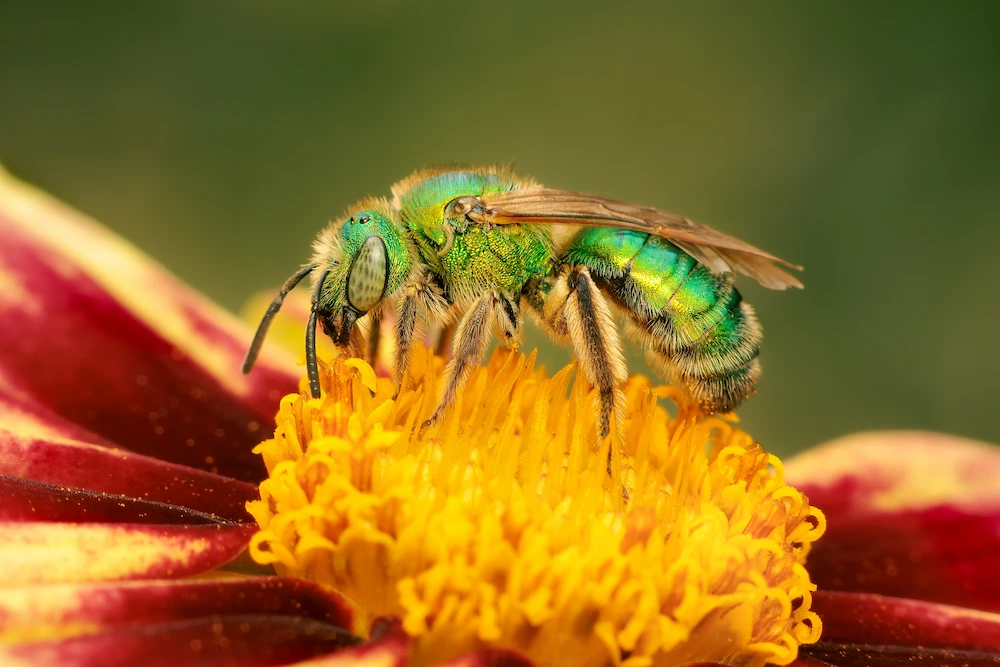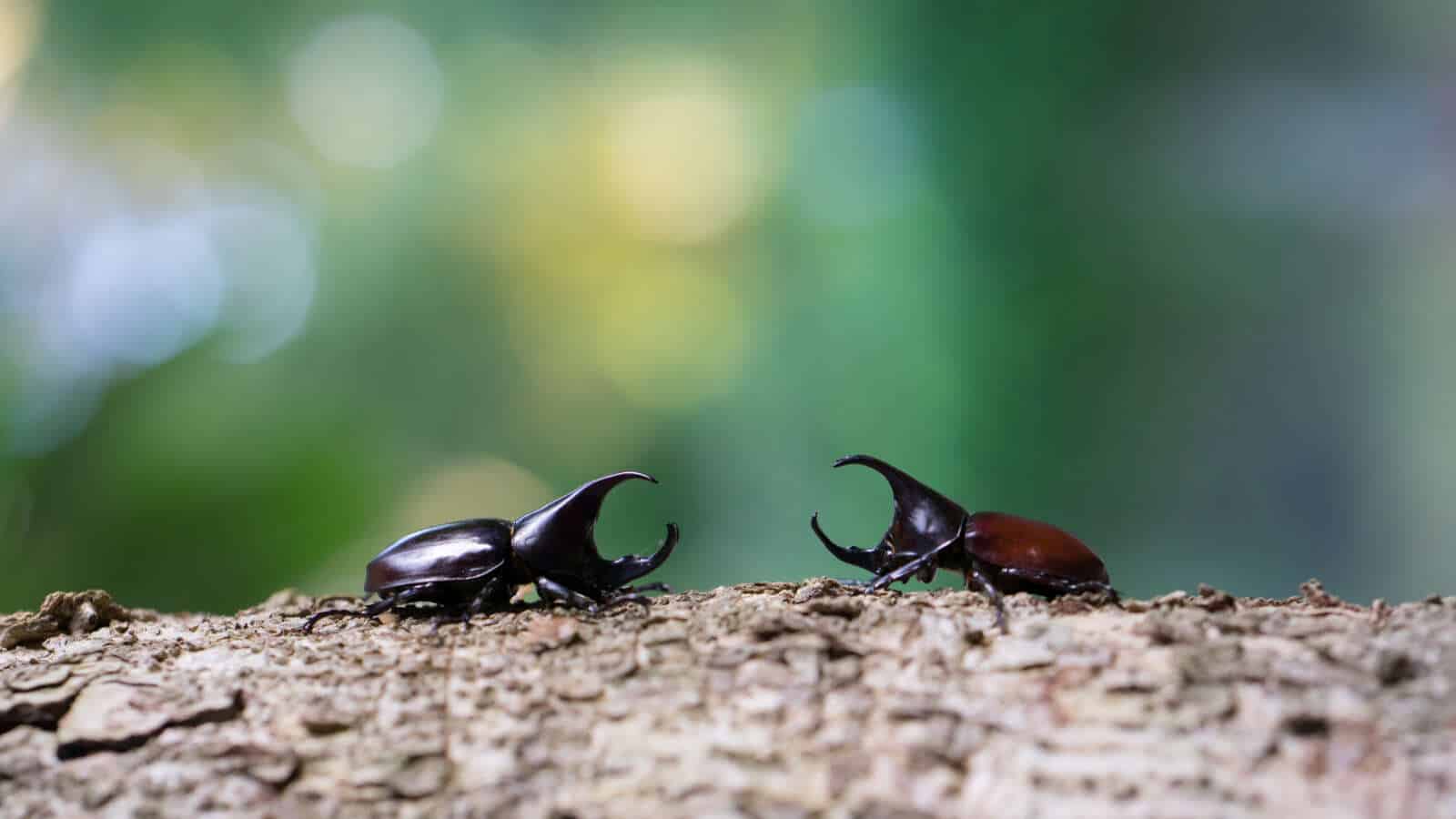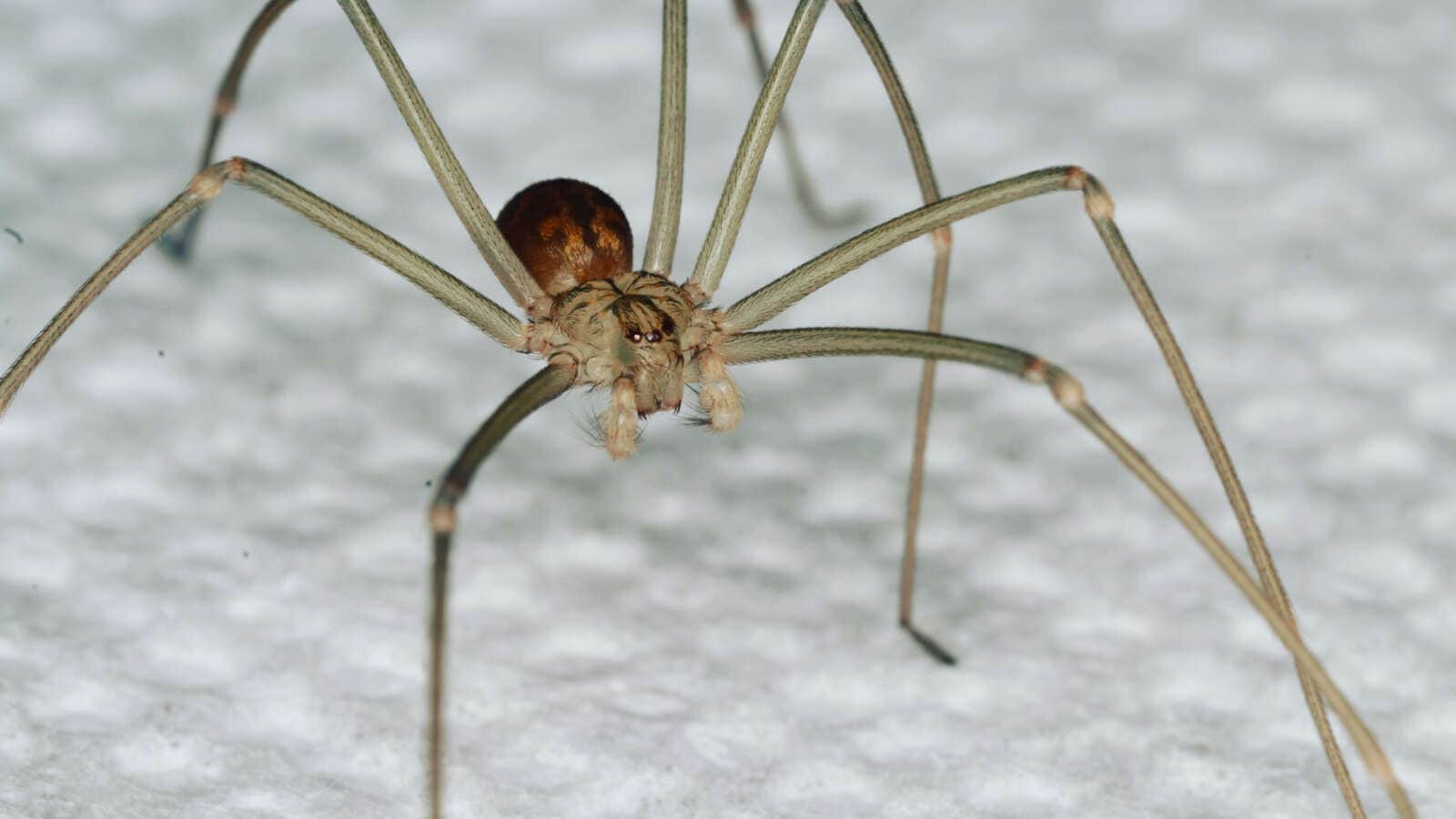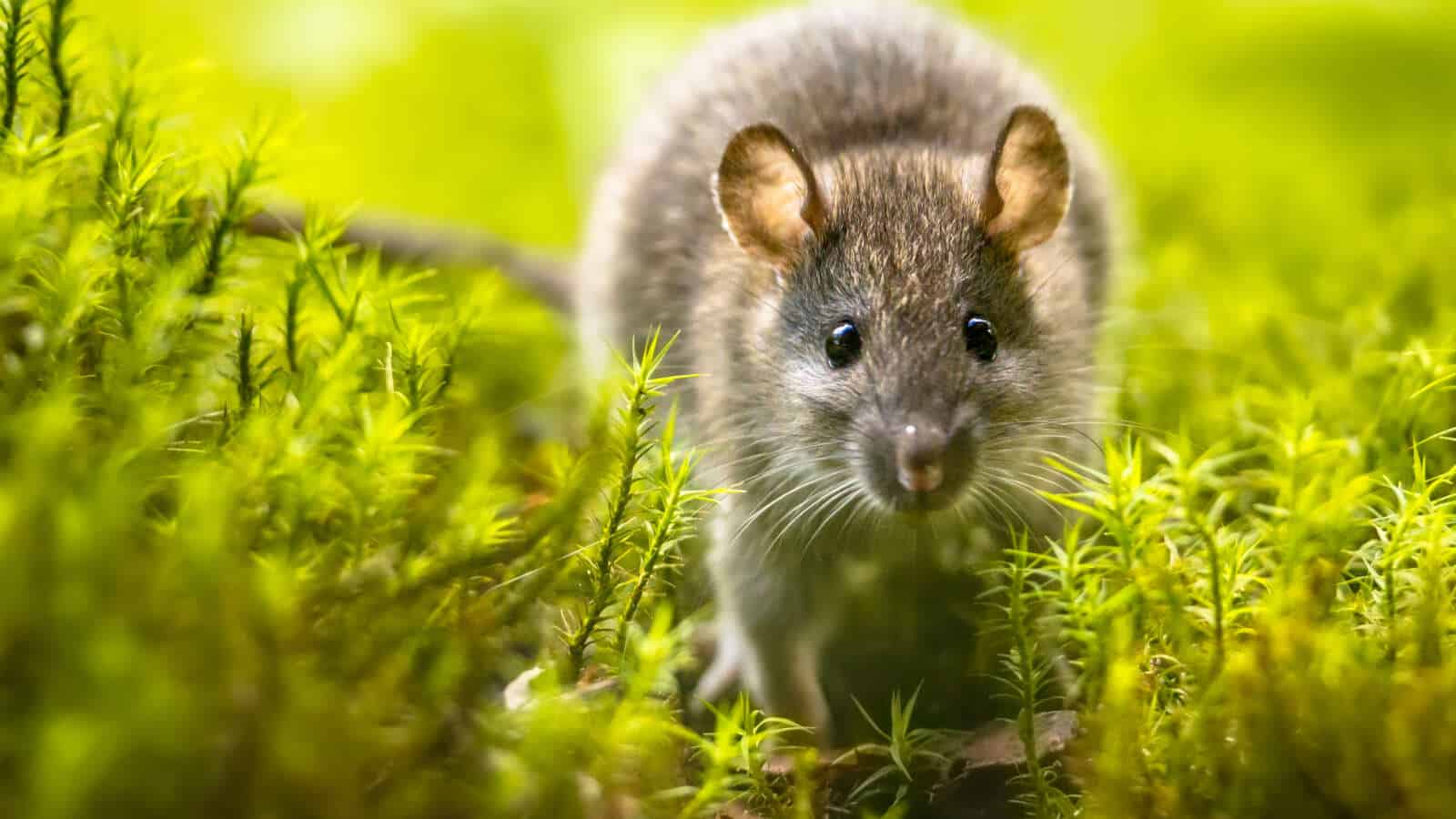Summary: Sweat bees are known for their annoying habit of hovering over people’s skin. This blog explores the lifestyle and preferences of the sweat bee, including its threat level. Pointe Pest Control protects homes from stinging pests.
______________________________________________________________________________________________________________________________________
You’re probably familiar with stinging insects. The angry attitudes, the black-and-yellow stripes, the nests that buzz with activity — it’s all part of their brand. Some stingers veer from this image by looking or acting differently than we expect. For example, carpenter bees are large black bees that are solitary and live inside wood, not beehives.
Speaking of bees that stray from stereotypes, have you heard of sweat bees? They’re small bees that are named after their gross habit of consuming our sweat. Let’s learn more about these strange bees and see if they’re a threat to us (besides the sweat-drinking).
The Basics
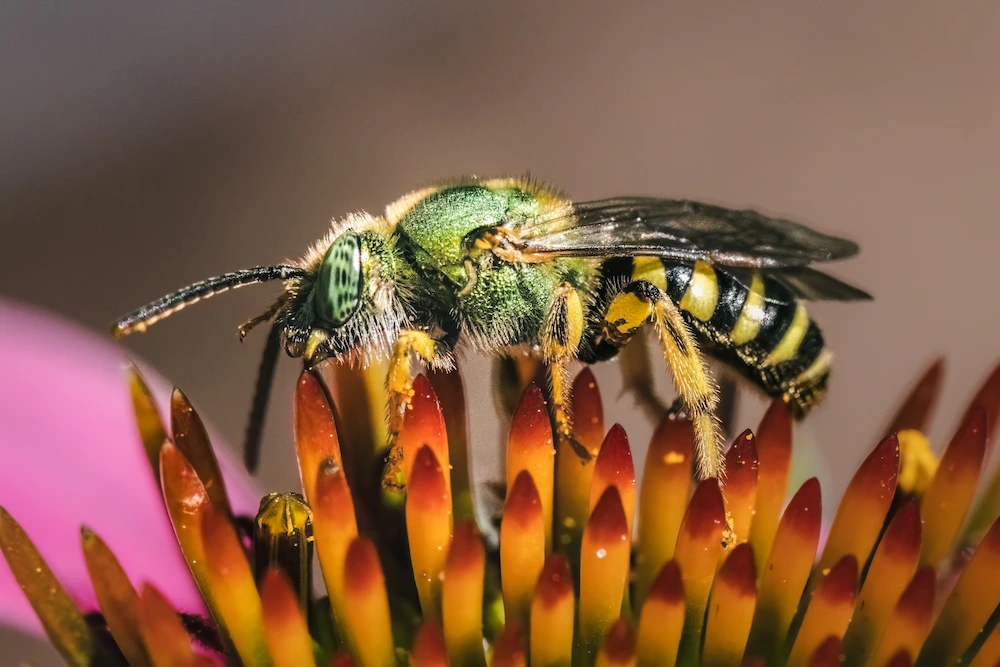
One thing’s for sure: you won’t mistake sweat bees for any other type of bee based on looks alone. They have a distinct appearance and lifestyle that is shared across their family. Sweat bees belong to the Halictidae family, and there are 500 species in the U.S. alone.
We only really see adult sweat bees because the larvae are so small and develop quickly. Adult sweat bees have these physical features:
- A length of 1/4 to 3/4 of an inch
- Metallic or dull hues
- Black, brown, green, blue, or purple coloring
- Slender bodies
- Veiny wings that flatten while at rest
- Tiny hairs
Focusing on that last one for a second, sweat bees have fuzzy hair like many other bees. These hairs naturally collect pollen when the bee visits flowers in search of nectar. Sweat bees aren’t as fuzzy as bumblebees, but both of these bees are important pollinators.
The Life Cycle
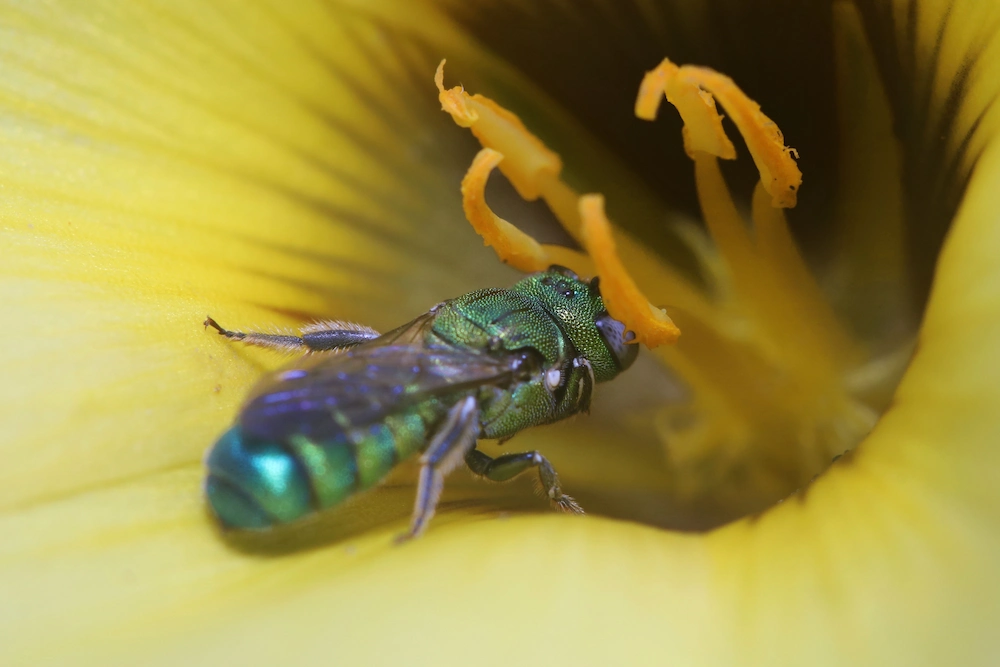
Sweat bees have the same life cycle as other stinging pests — egg, larva, pupa, adult — but the external circumstances look a bit different. Sweat bees can actually adapt to their environment by changing their social behavior. This protects their offspring and ensures the survival of their family.
The 4 main types of nesting habits are:
- Solitary — Live with their own family
- Semi-Social — Live in a common nest with a worker class
- Communal — Live in a solitary nest near other sweat bee nests
- Eusocial — Live in a colony inside a larger hive (like honeybees and wasps)
Regardless of their social status, sweat bees use a special tool to identify their homes after a long day of foraging. Lactones have chemical signatures that are unique to each bee and therefore unique to every nest. It’s similar to how ants and termites use pheromones to communicate with their own colonies.
The Habitat
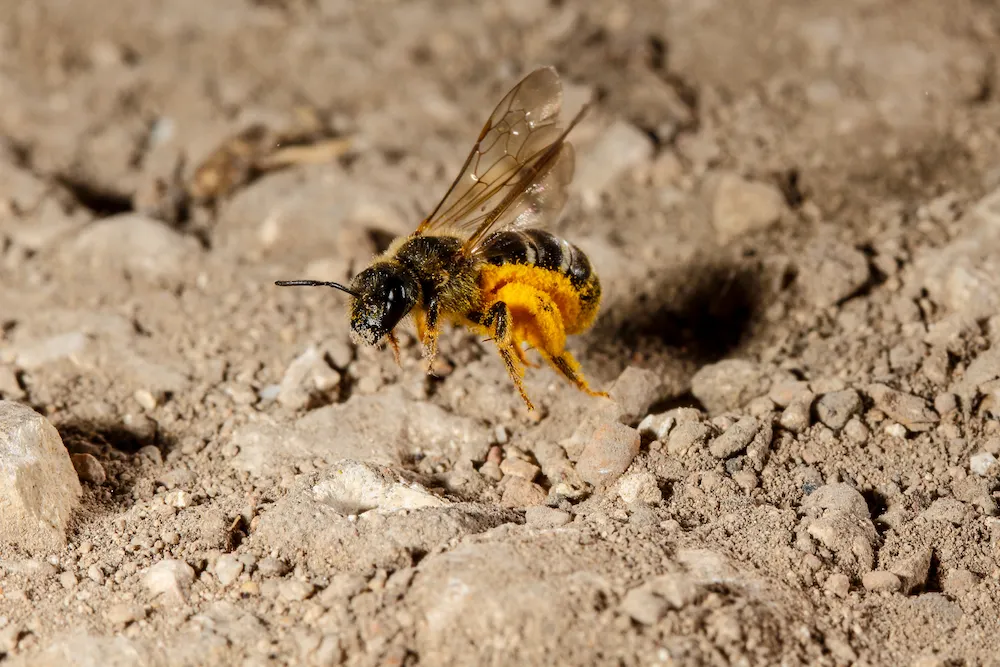
Sweat bees are more common in temperate regions, which explains why they’re so populous in our areas. The habitat and lifestyle largely depend on the season. Sweat bees that build their nests in spring are joined by females who overwintered and don’t have their own nests. Some females stay sterile and form a worker caste to help the other sweat bees.
As for the social nests that are created in the summer, they typically have one reproductive female and many workers that care for the offspring and nest. The last pupae and larvae will overwinter and start the process over again next spring.
Generally, most sweat bees nest in the ground. They prefer stable soil, like clay. The adults need to be able to care for their young by feeding them and carving out tunnels. These nests are often found near ponds, rivers, and streams for this reason. They also nest in damaged wood, but this is less common.
Certain types of sweat bees forgo these nest options for a crueler version. They act as parasitic insects by invading other nests and killing their eggs and larvae. They also steal their food supply and completely take over the nest to turn it into their own habitat.
The Diet
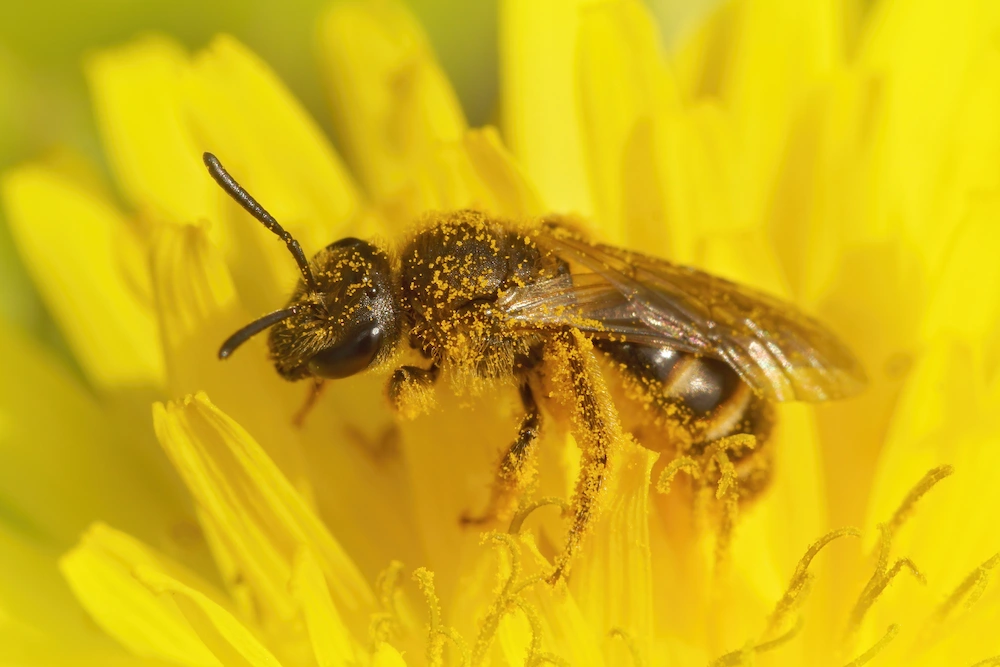
Like most stingers, sweat bees mostly live on nectar and pollen. They forage among flowering plants and crops for these, using their short tongues to collect the nectar. Sweat bees can also use buzz pollination (like bumblebees), where they beat their wings fast enough to vibrate the flowers and release the nectar and pollen.
Sweat bees visit native flowers and agricultural crops, including apples and stone fruits. The adults create a mass of pollen and nectar that they feed their larvae. Although these sweet substances are their main food sources, sweat bees seek another food group…
Why Sweat?
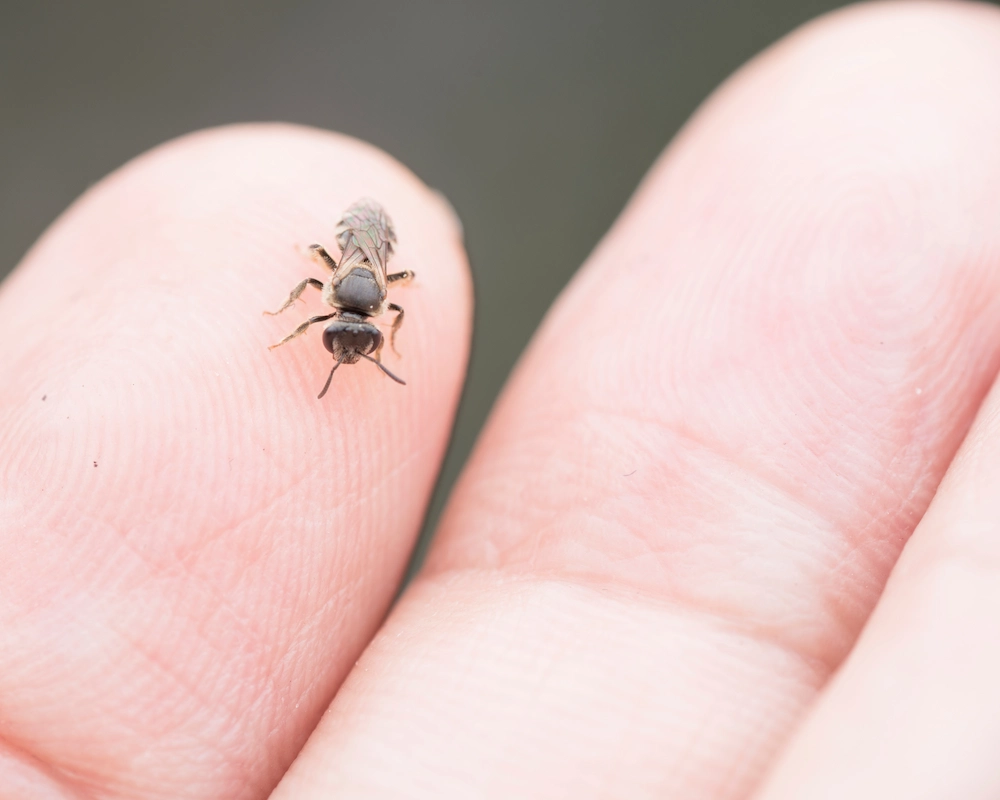
Simply put, sweat bees are attracted to our sweat because they want salt, moisture, and minerals. They’re generalist foragers that get their nutrients from a variety of foods. Once it finds a sweaty person (easy this time of year), the sweat bee chooses an arm or leg and uses its short tongue to lap up the sweat.
These little bees don’t need much sweat to be satisfied, as they just want salt to balance out their otherwise sweet diet. The amino acids and proteins also give sweat bees energy for their daily activities. It’s like their version of a protein shake.
Why do they need to get these from sweat? There’s not a set-in-stone answer, but the general consensus is that sweat bees are just naturally drawn to our sweat for its salt content. Whatever floats their boat, we guess!
Are They Dangerous?
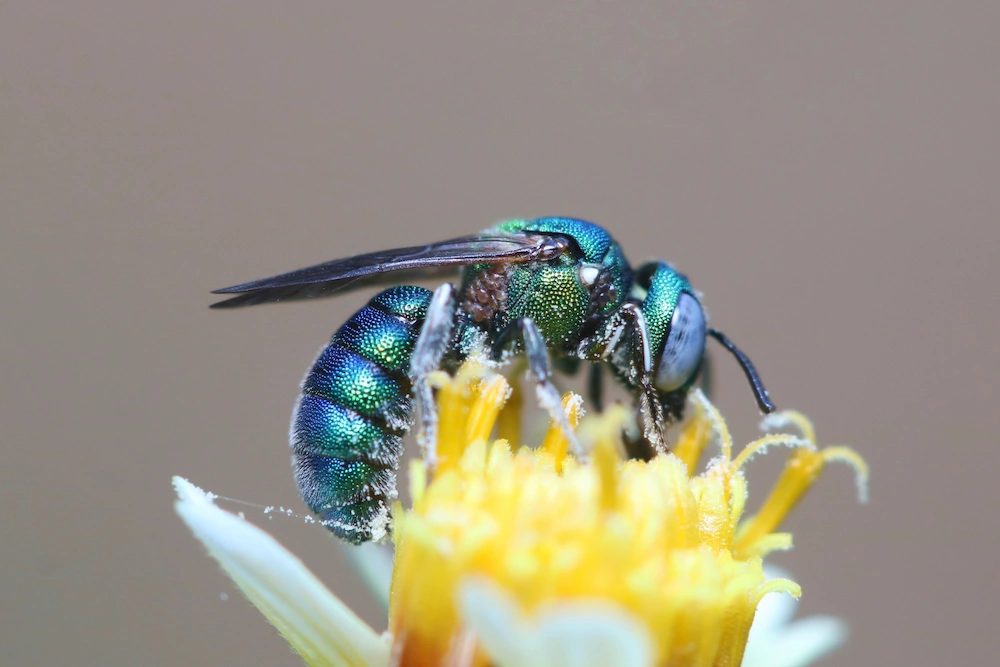
This question always comes up when we talk about stinging insects. Sweat bees are very diverse in their attitudes and “threat” levels, so there’s not a clear-cut answer.
Basically, sweat bees are harmless to us. They’re also not very aggressive, so you don’t have to be as worried about disturbing them as, say, yellow jackets. That being said, female sweat bees can sting when they need to defend their families. Like honeybees, their stingers get stuck in our skin and can’t be removed by the bee, so they have one shot.
The good news about their stings is that they are one of the least impactful. People liken it to a mild bee sting. If you’re stung, scrape out the stinger and wash it with soap and water. It’s also easy to avoid being stung. Just brush the sweat bee off or sit still, and it’ll leave soon enough.
The bad news is that it’s possible to be allergic to sweat bee stings. If you know you’re allergic to other bee and wasp stings, chances are high that you’re also allergic to these stings. Please seek immediate medical attention if you have trouble breathing or feel dizzy after being stung.
It’s interesting to note that sweat bees are often mistaken for hover flies. Hover flies also like our sweat and tend to hover (shocker!) above their food sources. Hover flies are lighter, black and yellow, hairless, and stinger-less. They’re even more harmless than sweat bees, which isn’t saying much.
Pointe is Abuzz with Pest Solutions
You don’t have to sweat pest problems when Pointe Pest Control is here! Our highly-trained technicians create a customized treatment plan for every customer because we believe that pest control should never be a “one-size-fits-all” situation. Between our targeted treatments and knowledgeable technicians, we’ll get to the bottom of your pest issues in no time.
Pests are still active in August since the high temperatures give them energy. Even at their worst, these creepy crawlies are no match for our dedicated technicians. Contact us for a free quote on our productive pest control services today!
Citations
Halictid bees (sweat bees). (n.d.). Missouri Department of Conservation. Retrieved July 22, 2025, from https://mdc.mo.gov/discover-nature/field-guide/halictid-bees-sweat-bees
Rutter, B. (2024, May 7). Sweat bees: 7 quick facts and more. Best Bees. Available at https://bestbees.com/sweat-bees-7-quick-facts-and-more/ (Accessed on July 22, 2025).
What are sweat bees?. (2021, August 19). Green Pest Services. Retrieved July 22, 2025, from https://greenpestservices.net/what-are-sweat-bees/


